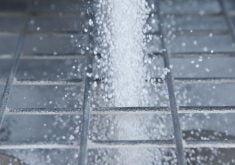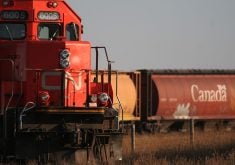WINNIPEG — Canadian quinoa acres have increased significantly this year and are expected to continue climbing, according to an official with the country’s only processor of the crop.
“As of today, we have 5,070 acres with 38 different growers,” said Michael Dutcheshen, general manager of Northern Quinoa Corp. (NorQuin), a specialty grain and food processing company in Saskatoon.
“The most we’ve done in any given year was 1,600 acres. Last year was at about 1,530 acres, so this is our biggest expansion in acreage, and next year we hope to double this at least as minimum.”
Read Also

House ag committee to undertake several studies
The House of Commons standing agriculture committee has set its agenda for the coming months. Members began the fall sitting with a two-hour update on international trade
Most of the 38 quinoa producers are located in Saskatchewan, where the South American crop was first introduced to Canada. Manitoba started producing quinoa in the 1990s, and there are now 10 growers, including one producer with 600 acres, the biggest quinoa producer in the country.
Production also expanded into Alberta last year, where there are now four quinoa growers.
“There’s more than enough interest here from growers, and this is the best area to grow it in, in the Prairies,” said Dutcheshen. “There’s way more than enough land in the Prairies for growing quinoa, probably more than South America has.”
Quinoa (keen-wa) originated in South America and has been grown and consumed there for thousands of years, according to NorQuin’s website.
It has increased in popularity as a healthy food product in North America in recent years because it is high in protein, gluten-free and suitable for a variety of cooking styles.
Dutcheshen said quinoa seeding is almost complete.
“Quinoa likes dry weather, which is kind of a contradiction in some sense because it grows best north of Highway 16,” he said. “So dry land in those area is better for quinoa. It doesn’t like to sit too wet, but I guess it’s not overly picky either.”
Dutcheshen said prices are rising, and the biggest challenge is remaining competitive with Canada’s biggest rival, South America.
He said he couldn’t provide exact prices because they were internal to the company.
















